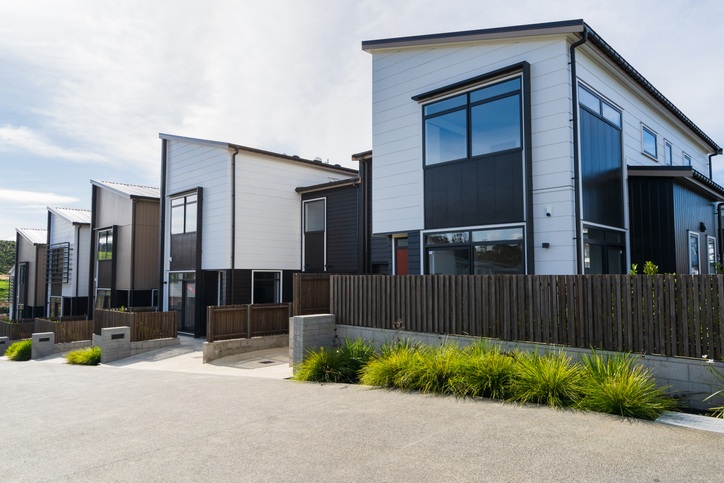Investing in real estate is a proven strategy for building long-term wealth. But one of the biggest hurdles for aspiring investors is the down payment. Unlike purchasing a primary residence, investment properties typically require larger down payments, stricter qualifications, and more financial preparation.
This guide will break down everything you need to know about investment property down payments, the types of loans available, and how to save or creatively finance your first deal. By the end, you’ll have a clear roadmap to begin your real estate investment journey with confidence.
Understanding Investment Property Down Payments
When it comes to an investment property, the down payment is a significant factor in the approval and cost of the loan. Generally, down payments for investment properties are higher than for primary residences, starting at around 15% and increasing depending on the loan type and property.
Why such steep requirements? Investment properties carry more risk for lenders since they aren’t your primary home. Because of this, lenders enforce higher down payments as a form of security. However, depending on the type of property, the lender, and your financial profile, your options can vary significantly.
Types of Investment Property Loans and Minimum Down Payments
Investment property loans come in a variety of forms, each with different down payment requirements, benefits, and challenges. Here’s a closer look at the most common types of loans:
Government-Sponsored Investment Property Loans (15%-25% Down Payment)
Government-sponsored entities like Fannie Mae and Freddie Mac often back conventional loans for investment properties. These typically require lower down payments compared to private loans. For example:
- Single-Unit Properties: Minimum down payment of 15%
- Multi-Unit Properties (2-4 units): Minimum down payment of 25%
While these loans offer relatively affordable down payments, they come with stricter qualifications:
- A minimum credit score of 680 or above
- A debt-to-income (DTI) ratio of 45% or less
- Six months of cash reserves
- Private mortgage insurance (PMI) if the down payment is less than 20%
Private Loans for Investment Properties (20%-40% Down Payment)
Private lenders cater specifically to real estate investors. These loans are generally more flexible than conventional loans but come with higher interest rates and down payment requirements.
DSCR Rental Property Loans
Debt-Service Coverage Ratio (DSCR) loans use the income generated from the property to assess your eligibility, rather than personal income. These are ideal if you own multiple rental properties or are self-employed. Expect down payments of 20%-25%.
Renovation Loans
Designed for house flips, these short-term loans often cover both the purchase price of the property and renovations. Down payments can range from 25%-40%, but they’re perfect for investors looking to add value through renovations.
Commercial Loans for Investment Properties (25%-Plus Down Payment)
For investors purchasing multifamily housing (5+ units) or commercial properties like offices or retail spaces, commercial loans are the go-to option. These loans typically require:
- A minimum down payment of 25%
- High credit scores (700 and up)
Due to their scale and risk, commercial loans often have stricter terms but accommodate larger projects.
What If You Don’t Have a Full Down Payment?
Not everyone has tens of thousands of dollars readily available for a down payment. Fortunately, there are creative ways to secure financing or start investing in real estate with less capital.
Alternative Financing Solutions
- Seller Financing: Negotiate directly with the property owner to pay in installments, skipping traditional lenders.
- Home Equity Loans: Leverage equity in your current home to fund an investment property purchase.
- Personal Loans or Lines of Credit: While these loans can supplement your down payment, be cautious about accruing additional debt.
- Self-Directed IRAs: Use your retirement funds to purchase real estate as an investment.
Alternative Ways to Start Investing with Less Money
If a full property purchase isn’t feasible right now, there are still ways to break into the real estate market:
- Real Estate Investment Trusts (REITs): Invest in companies that own income-producing real estate, like apartment complexes or shopping centers.
- Real Estate Crowdfunding: Pool money with other investors through platforms like Fundrise to invest in larger real estate projects.
- Real Estate Wholesaling: Secure contracts on properties, then sell the contracts to other buyers for a profit.
These strategies allow you to get experience in real estate investing without the high initial costs.
Tips to Save for an Investment Property Down Payment
If your goal is to save for a down payment, it’s time to get strategic. Here are some actionable ways to build your savings:
- Rent Out a Room: Already a homeowner? Rent out a spare room or space to generate income for your down payment fund.
- Start a Side Hustle: Freelancing, driving for rideshare services, or selling handmade items can help you accumulate extra income faster.
- Sell Unused Items: Declutter your home and sell items you no longer need. Electronics, antiques, or furniture could bring in extra cash.
- Automate Savings: Set up automatic transfers to a dedicated savings account. Even smaller amounts add up over time, so consistency is key.
Building Confidence for Your Real Estate Journey
Investing in property is a big financial commitment, but understanding your financing options is the first step toward success. Whether you’re leveraging government-backed loans, tapping into private lenders, or starting small with creative strategies, building wealth through real estate is achievable with careful planning.






